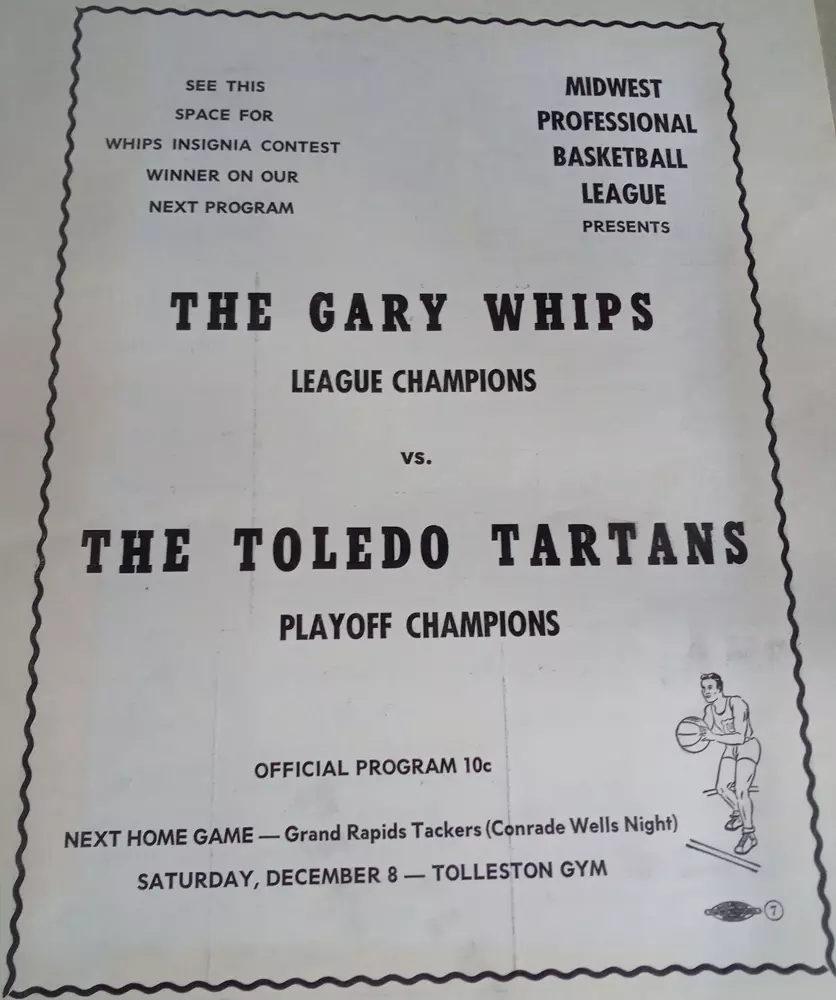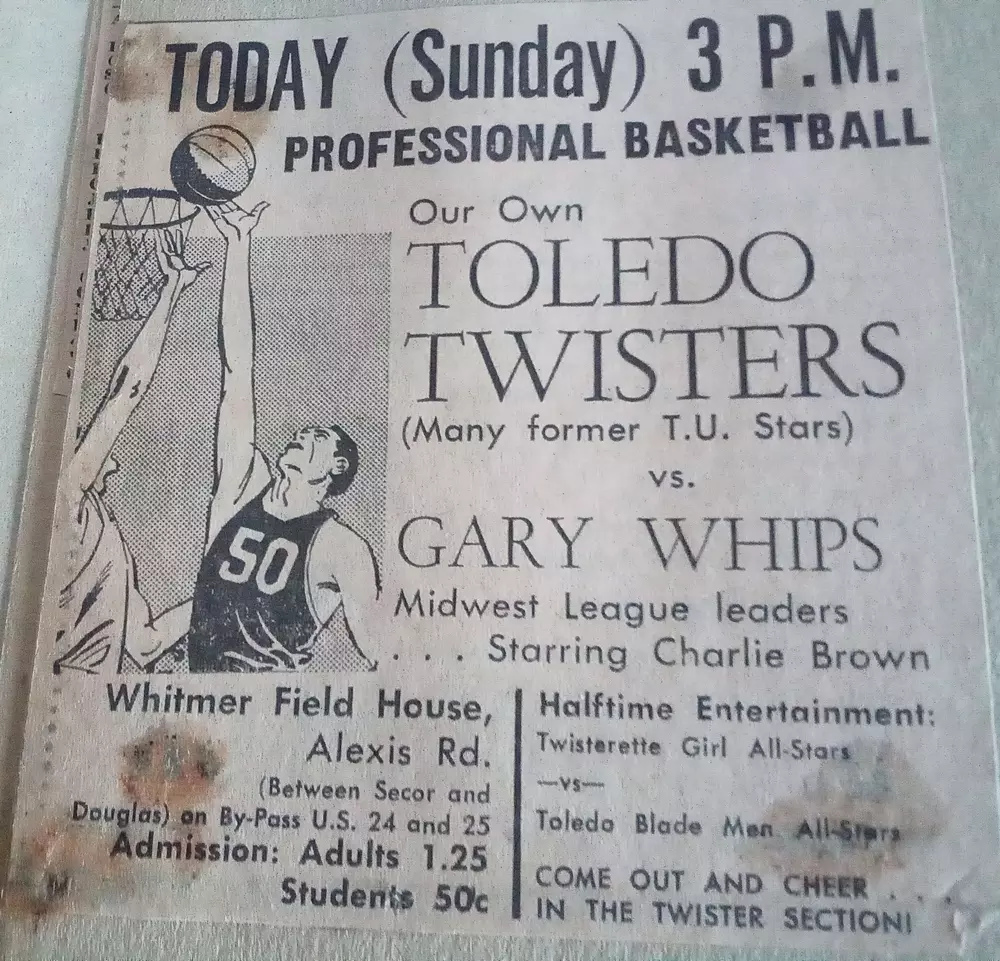 Twister Ad
Twister Ad
Exhibit Gallery
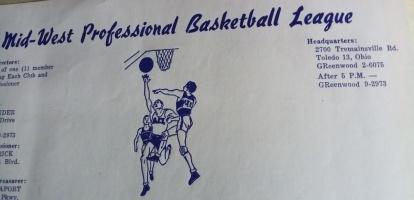
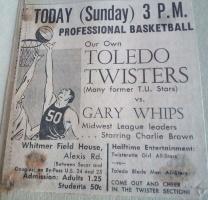
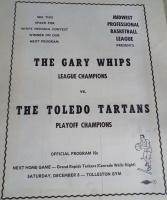
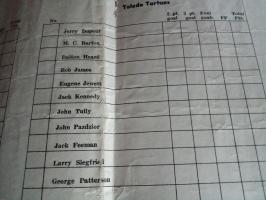
Memories of Semi-Pro Basketball in Toledo: Twisters of 1961-62 and Tartans of 1962-63
By: Ken Kander
As the statistician for Toledo’s minor league professional basketball teams in the early 1960s, I was able to meet some future NBA stars, a few college superstars, several former University of Toledo players, and many other athletes with backgrounds ranging from true gentlemen to dangerous criminals. This essay presents my recollection of the players and teams.
The Midwest Professional Basketball League—affiliated with the recently organized American Basketball League (ABL)—became a reality in November of 1961. The Toledo team had agreements with the Washington Tapers and Pittsburgh Rens of the newly formed ABL. Games were played on Saturdays and Sundays, and most of the players held regular jobs during the week. For the Toledo Twisters (known as the Tartans the following year), players frequently came and went. The majority of players stayed in the league the next few years, but many players changed teams from year to year.
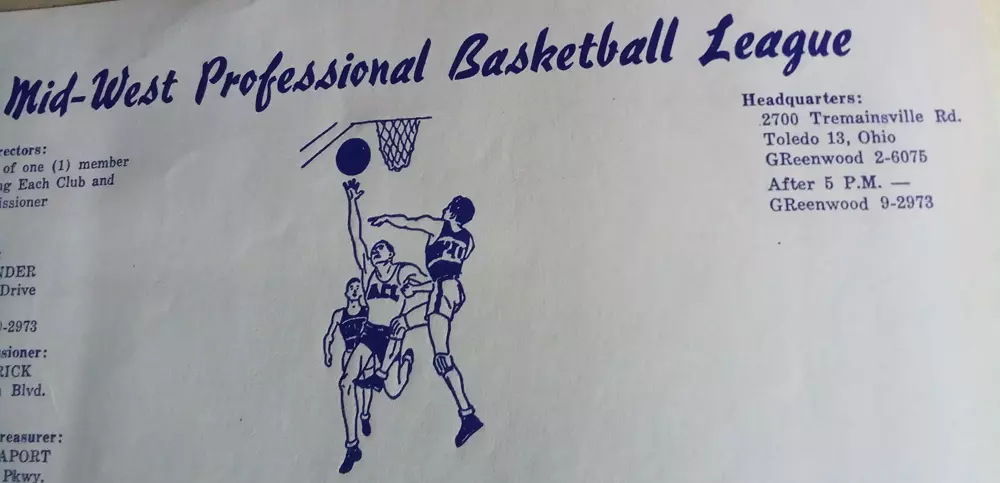 Mid-West Professional Basketball League Letterhead.
Mid-West Professional Basketball League Letterhead.
The “Twisters” nickname resulted from the 1960s dance craze—The Twist. It was a strange name for a sports team (well, maybe not as strange as Mud Hens!), but Toledo management apparently thought it would help attract younger fans. Frequently, the halftime show would include a twist contest—or, a contest with some type of twist. Did the nickname and the halftime show help to attract a younger crowd? No, the Tartans’ nickname the following season resulted from management wanting anything other than Twisters.
As the 1961-62 season was beginning, the daily headlines were not about basketball – the news everyone was talking about centered around the disappearance of Michael Rockefeller, youngest son of New York Governor (and future Vice President) Nelson Rockefeller. Michael had disappeared while on a trip in the jungles of New Guinea, and rumors were running rampant. Of course, the Rockefeller name was well known, so the headlines ran the gamut of speculation, from “he’ll be found alive and well” to “he was eaten by cannibals” (oh, my!). Articles continued for several months – Michael’s body was never found. A pleasant diversion to the potential horrors of the Rockefeller search was the new game in town. Toledo had a minor-league basketball team.
 Ad for the Twisters. Source: Author’s personal archive
Ad for the Twisters. Source: Author’s personal archive
For Toledo Twisters fans, the most popular player on the team was Bobby Pawlak. He was listed as 5’9” and 150 pounds when he was a senior starting point guard earlier that year for the University of Toledo Rockets, and the Twisters program generously listed him at 6’0”. He was probably 5’8” on his better days! The fans already knew him from his three years at UT, and they were disappointed that he was not in the starting lineup for the Twisters in the first game of the season. As soon as the team’s inaugural game had begun, the fans began chanting “We want Bobby….We want Bobby”. When Pawlak was inserted into the game, he received a standing ovation. He scored 25 points in the game, and was the team’s high scorer. Fun times!
For me, the biggest disappointment on the Twisters – by far – was Clarence “Bevo” Francis. I was a huge basketball fan and I religiously followed the sport, including major-league, minor-league, and college teams and players. I knew of Bevo’s superstar offensive exploits at Rio Grande College, such as scoring 116 points in one game and 113 points in another. What I hadn’t known was that the competition was not only sub-par, but also included junior colleges (hence, the 116-point effort!). What I also hadn’t known was that playing defense was apparently not part of his game. He left Rio Grande in 1954, did not play in the NBA, and actually only played sporadically for the next seven years. When he joined the Twisters during one of his “comebacks” for Toledo’s sixth game of the 1961 season, his appearance was anticipated with a great deal of hoopla and excitement. I remember watching him at practice during the week prior to his first game, and he was terrible. He actually was inserted as the Twisters’ starting center in his first appearance with the team, and he scored one point. One point! He did not play any defense, he did not handle the ball well on offense, and he looked totally lost while on the court. He was released from the team after the game.
There are many more players – and many more stories – to report on with the Twisters, and I’ll save those for future articles. I enjoyed the team immensely. A bunch of fun-loving guys, with a love for the sport of basketball, and with most players on the team constantly displaying unbridled enthusiasm. The team finished with a winning record and then won the playoffs; everyone was looking forward to the next season. What wasn’t known at that time was that the next season would be the final season for Toledo, and only three Twisters would be returning as Tartans.
As the 1962-63 season was approaching, everyone was talking about the Cuban Missile Crisis. Basketball seemed unimportant at that time, and continued to be unimportant to most of the Toledo fans throughout the season. As we all know, a major crisis in Cuba was averted – on a much smaller scale, the basketball crisis in Toledo was not averted. During the upcoming season, several home games had fewer than 500 fans in attendance (the previous year average was about 2,200 fans), and the franchise would be financially unable to continue after the conclusion of the season.
For the 1962-63 season, the most talented player on the Tartans was M. C. Burton. He was popular with the fans, due to his athleticism on both ends of the court, as well as his outgoing personality. He chose to not play in the NBA, since he was already attending the University of Michigan Medical School. He loved playing basketball, so the lure of weekend competition worked out well for him and for the Tartans. He was always fun to watch, and in my humble opinion he was the most valuable player on the team. He was named to the all-league first team. I certainly enjoyed my conversations with him, and I continued to follow his minor league basketball career after the season ended. When the Tartans closed operations prior to the 1963-64 season, M. C. remained in the league by signing with the Holland team, and records show that he led the league in scoring with a 21.5 per game average. When the entire league closed operations prior to the 1964-65 season, M. C. played on weekends in the North American Basketball League. He continued to be an NBA-caliber player competing against minor league players. This league folded after the 1967-68 season. In the league’s final season, M. C. was voted “Most Valuable Player,” leading his team to the championship while also leading the league in rebounding. Well done Doctor Burton!
The most mysterious player on the Toledo Tartans was Reggie Harding. He played for Detroit Eastern High School through 1961, and he had been selected by the Detroit Pistons in the 1962 NBA draft as the first player ever drafted prior to entering college. Reggie’s sad and tragic life-story is well documented.1 Reggie only played in two games with the Tartans. I remember him as a sullen and unfriendly person; of course, I knew little of his background at that time. He had been a major talent in high school, seven feet tall and a dominating player. He only displayed flashes of that talent with the Tartans, although the Pistons did bring him up to the NBA in 1963. An interesting fact is that after his two-game stint in Toledo, he returned to the league later that season – and signed with a rival team!
A future NBA star who played most of the season with the Tartans was Larry Siegfried from Ohio State. He joined the team for their fifth game of the season, and was 11 for 11 from the free throw line in his inaugural performance. His skills on the court, and his being from Ohio as well as a star at OSU, instantly endeared him to the Toledo fans. He was an amazing free throw shooter, an excellent all-around player, and always hustled on both ends of the court. What I especially enjoyed was his fierce determination – he was always totally involved in the game. I was confident that he would eventually play in the NBA. As many readers will already know, he signed with the Boston Celtics later that year, and he won five championships with them! In addition, he led the NBA twice in free-throw percentage.
The most famous athlete to play for the Tartans may have been Ron Kramer, who joined the team in February of 1963. At that point, he was already nationally known as an All-Pro tight end for the world champion Green Bay Packers of the National Football League. He was an intriguing addition to our basketball team, since he had earned his reputation as a star football player. Kramer actually had also played basketball at the University of Michigan, and was among the league leaders in both scoring and rebounding. It was obvious to everyone that he was an excellent athlete. Kramer kept to himself most of the time, and I never got to know him well. I thought it was exciting that we had a college All-American football player and a National Football League champion playing on our basketball team! He only played for the final two months of the season, but was a terrific rebounder during his short tenure.
The Tartans played an exciting brand of basketball, qualified once again for the playoffs, and lost in the championship game to the Holland Oilers. I loved doing the statistics for both seasons – no computer-enhanced stats, only the basics of scoring, rebounding, and the number of three-point field goals per player. The three-point field goal was introduced in the inaugural 1961-62 season, following in the footsteps of the ABL that same season. The distance was determined to be 25 feet for a field goal to be a three-pointer. By comparison, the NBA adopted the three-pointer in 1979 (eighteen years later!), initially experimenting with a distance of 23 feet 9 inches.2
My involvement as a sports statistician in Toledo actually began earlier from the sport of baseball in the summer of 1961, with Dunbar Drilling of the Toledo Federation Amateur Baseball League. I’ll save the baseball stories for future articles, along with the explanation for how I was so lucky to be involved with Dunbar Drilling as well as with the Toledo teams in the Midwest Professional Basketball League.
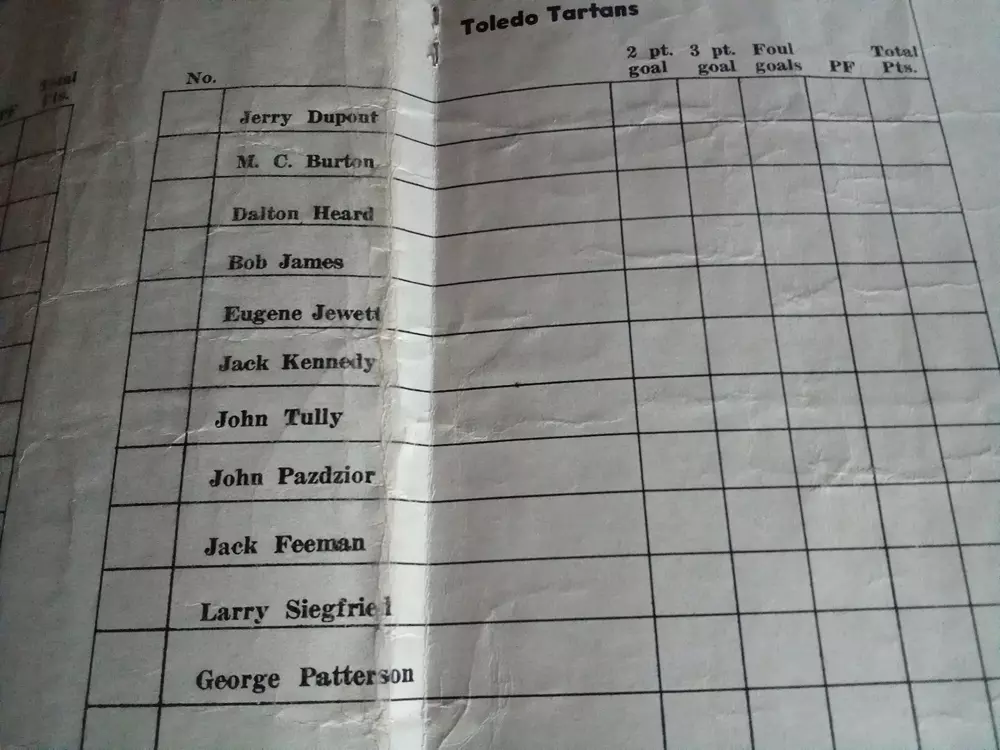 Toledo Tartans statistics sheet.
Toledo Tartans statistics sheet.
Endnotes
1. Adrian Lawhown (September 15, 2017). “Wasted talent: The sad story of former Pacer Reggie Harding.” Fansided. https://hoopshabit.com/2017/09/15/wasted-talent-the-sad-story-of-former-pacer-reggie-harding/. A description of his life and his criminal activities can be found in this article.
2 Ryan Wood (June 15, 2011). “The History of the 3-Pointer.” USA Basketball. https://www.usab.com/youth/news/2011/06/the-history-of-the-3-pointer.aspx

